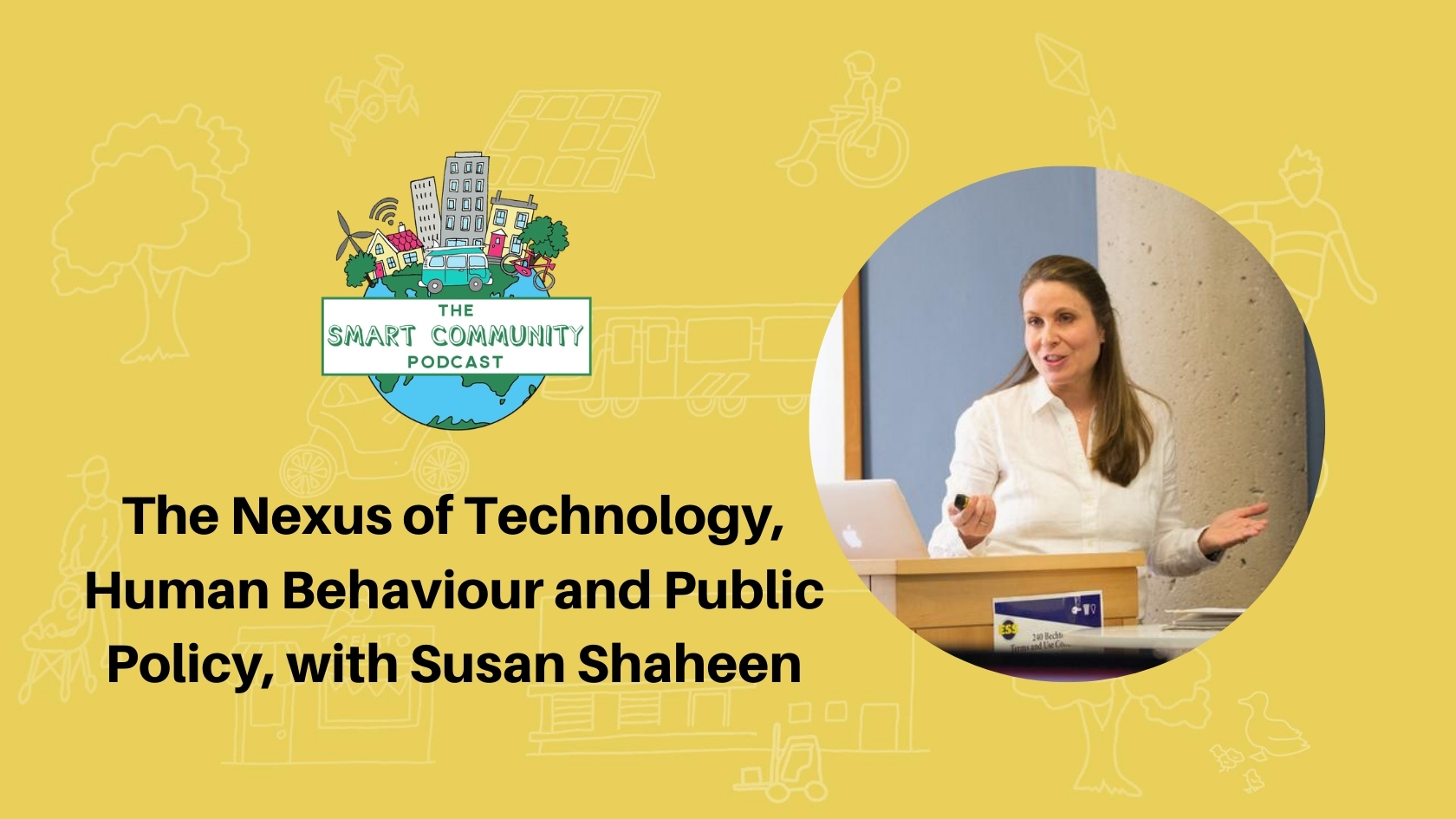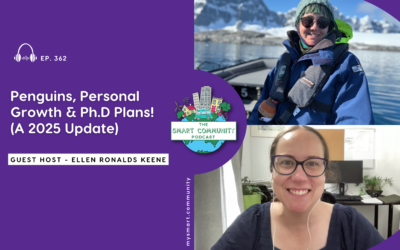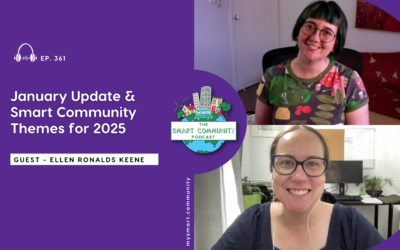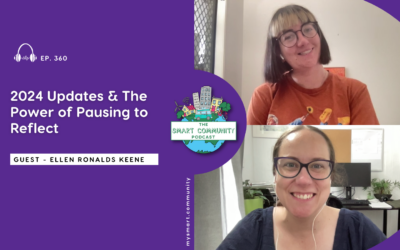In this episode of the Smart Community Podcast, I have a fascinating chat with Susan Shaheen, Professor in Civil and Environmental Engineering and the Co-Director of the Transportation Sustainability Research Center at the University of California, Berkeley. Susan and I chat about her interest in the nexus of technology, human behaviour and public policy, and how the US Smart Cities Challenge sparked her interest in the space, when she was involved with San Francisco’s application. We discuss how pivotal and galvanising that grant was for many cities around America, and how the community engagement framework they used for the San Francisco application really valued a co-creation model between public, private and community. Susan then tells us about some of the projects she’s been working on, including some research documenting the learnings from the cities of their experience of the Smart Cities Challenge. She tells us some of the takeaways from that research, including the four categories of Smart Cities or Communities they uncovered, plus the importance of not relying solely on champions for the long term sustainability of Smart projects. We finish our chat discussing the emerging focus of social equity and social justice in Smart Communities to help solve systemic problems, plus some of Susan’s favourite resources. As always we hope you enjoy listening to this episode as much as we enjoyed making it!
Listen here:
What we cover in this episode:
- Susan’s background and her passion for the nexus of technology, human behaviour and public policy
- How the US Smart Cities Challenge sparked her interest in the space when she was involved with San Francisco’s application
- How pivotal and galvanising the Smart City Challenge was for many Cities and Regions in America
- What a Smart Community is to Susan and why it’s important for the public good
- The way the community engagement framework they used for the San Francisco application really valued a co-creation model between public, private and community
- The power of a having a Mayor who understands and invests in these concepts and believes it’s possible to create a Smart Community
- Some of the projects Susan’s been working on, including key takeaways from research documenting the learnings from the cities of their experience of the Smart Cities Challenge
- The four categories of Smart Cities or Communities identified in Susan’s research: Tech-Oriented, Economic Revival, Growth and Small/Rural
- The benefits of knowledge sharing between similar communities and having a network of cities that can collaborate on policy and problem solving
- The importance of not relying solely on champions for the long term sustainability of Smart projects
- Things that the COVID19 crisis has shined a light on for cities and communities
- The emerging focus of social equity and social justice in Smart Communities to help solve systemic problems
- Some of Susan’s favourite Smart Community resources
Quotes:
“[The US Department of Transport Smart City Challenge] really caused the acceleration of thinking around this area, and that you didn’t have to be some big city in order to be a Smart City, or a city that is embracing technology in a way that reflects the goals and objectives of the community.”
“To me, a Smart Community reflects its people. I had heard Smart City used a lot as terminology and I had a vision of it being much more about technology, and the movement of electrons, for example, to cause a city to be fully connected. So to me, it was more about technology and wireless than it was about people. And now my view is that, first and foremost, it’s about people and their goals and objectives, and what role technology can play in that.”
“Technology is part of where we’re all going and it’s coming at a faster rate than it was even 10 years ago. So thinking about how to integrate it into our communities is essential. And having a mindset that focuses on what the community really wants to do with technology…[for example] using technology to close the gaps to provide social and racial equity. I think it provides us with an opportunity to really think about that very carefully, before technology creates even more divides that are currently there.”
“The other really big key takeaway for us is that in order for a Smart City or a Smart Community to be successful, it definitely needs a champion. But it can’t fall apart if that champion, for example, leaves the organisation. So this philosophy has to be more deeply embedded throughout an organisation and it can’t be siloed…So a lot of what we took away was just the importance of this very integrated approach being central to the concept of a Smart City or a Smart Community.”
“We’re always elevating technology. It’s a concept that everybody gets excited about, it’s change, and it’s potentially sexy or seductive in some ways. But if you just layer technology on existing systemic problems, you’re not going to solve those problems with technology.”
“It’s about people, but if we don’t engage people, how are we ever going to create something that’s sustainable and Smart? The engagement is going to be different.”
Links:
The US DoT Smart City Challenge
NACTO National Association of City Transportation Officials
SCP E170 with Jennifer Sanders from the Dallas Innovation Alliance
Connect:
Find the full show notes at: www.mysmart.community
Connect with Susan on LinkedIn or Twitter @SusanShaheen1
Connect with me via email: hello@mysmart.community
Connect with My Smart Community via LinkedIn or Twitter and watch on YouTube
The Smart Community Podcast is produced by Perk Digital.






0 Comments